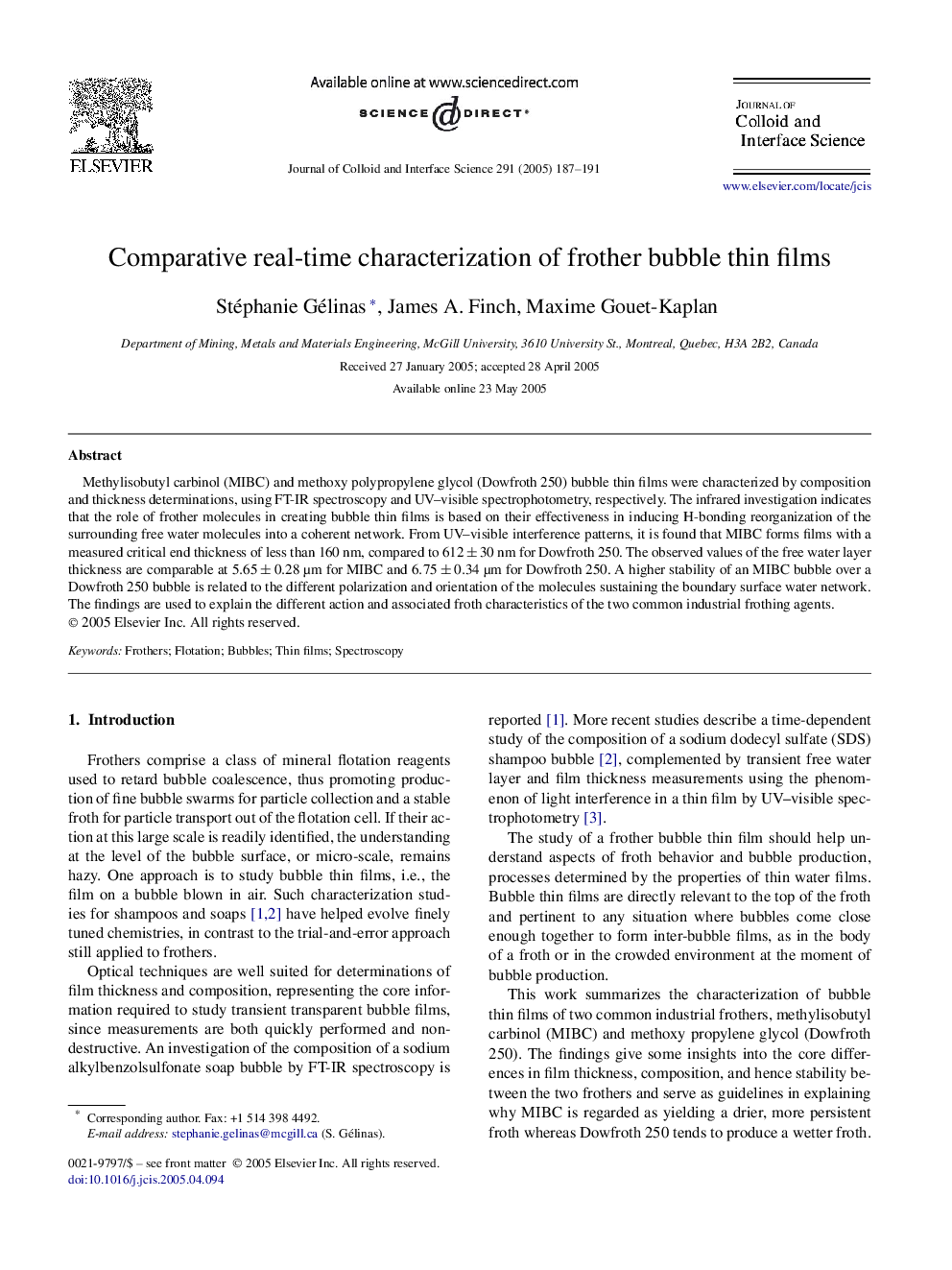| Article ID | Journal | Published Year | Pages | File Type |
|---|---|---|---|---|
| 10377522 | Journal of Colloid and Interface Science | 2005 | 5 Pages |
Abstract
Methylisobutyl carbinol (MIBC) and methoxy polypropylene glycol (Dowfroth 250) bubble thin films were characterized by composition and thickness determinations, using FT-IR spectroscopy and UV-visible spectrophotometry, respectively. The infrared investigation indicates that the role of frother molecules in creating bubble thin films is based on their effectiveness in inducing H-bonding reorganization of the surrounding free water molecules into a coherent network. From UV-visible interference patterns, it is found that MIBC forms films with a measured critical end thickness of less than 160 nm, compared to 612±30nm for Dowfroth 250. The observed values of the free water layer thickness are comparable at 5.65±0.28μm for MIBC and 6.75±0.34μm for Dowfroth 250. A higher stability of an MIBC bubble over a Dowfroth 250 bubble is related to the different polarization and orientation of the molecules sustaining the boundary surface water network. The findings are used to explain the different action and associated froth characteristics of the two common industrial frothing agents.
Related Topics
Physical Sciences and Engineering
Chemical Engineering
Colloid and Surface Chemistry
Authors
Stéphanie Gélinas, James A. Finch, Maxime Gouet-Kaplan,
